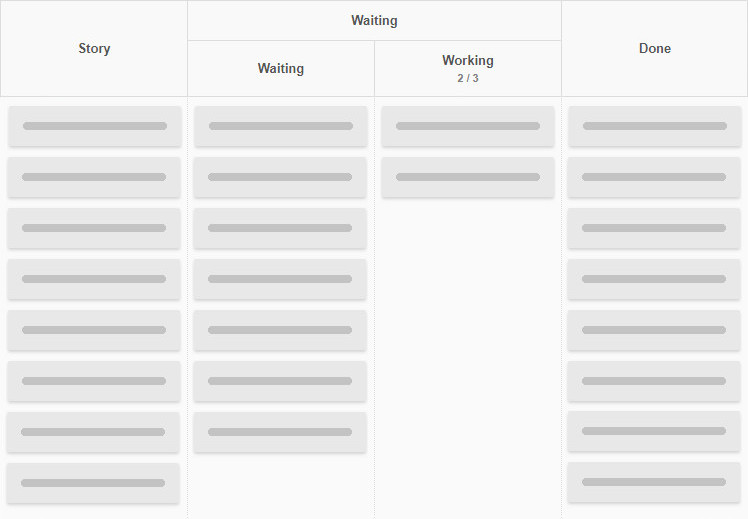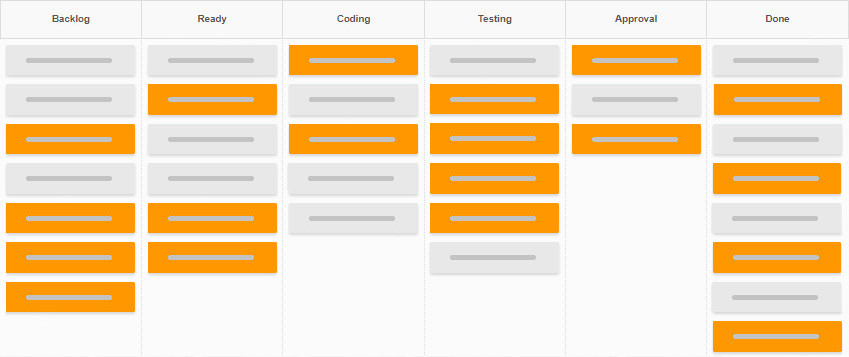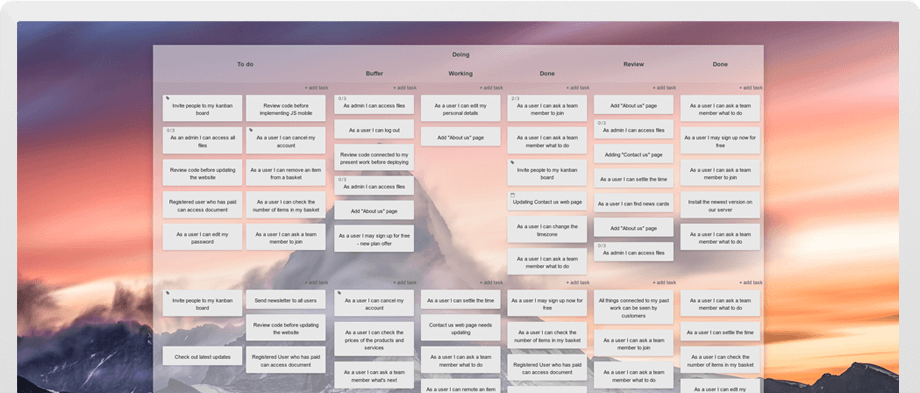Kanban is a simple lean, best practice method focused on creating a continuous workflow and ongoing value increase for the customer. It aims to visualize and improve any software development process. The result is a development pipeline capable of delivering high-value work predictably and efficiently
In 2012 over 80% of all software development processes used lean and agile methods, including Kanban. This article will give you a basic understanding of Kanban in development processes.
Core Kanban principles for software development
Workflow illustration
Visualization gives the team a shared overview of the process and thus helps to identify and resolve any workflow problems. Moreover, it simplifies collaboration between people and across different project teams. A common practice here is sharing a process board that visualizes specific work phases. A rudimentary Kanban board for a software development team consists of three columns: Backlog, In Progress, and Done.
Limiting work in progress
Constraining work in progress is perhaps the principle most closely associated with Kanban. The idea behind WIP limits is to ensure that you only start work on tasks that can be passed smoothly onto the following process stage - without blocking the entire workflow. You can limit work in progress per process stage, per person, or work item difficulty.
Measuring lead time
After implementing Kanban, you need to control and optimize your workflow. The crucial metric is the lead time - the average time it takes tasks to get from a specified start point to the named end stage. For example, you can measure how much time it takes to perform steps in development, defect management, and resolving support issues. Typically, the lead time value can be decreased by identifying and eliminating process bottlenecks.
A utility helpful in accurately measuring lead time is the Lead and Cycle Time Diagram. A precise measurement of your process' lead time will allow you to accurately calculate delivery times, keeping your clients informed and satisfied.
10 reasons for adopting Kanban boards in software development
Kanban method:
- Accelarates software delivery.
- Helps manage changing requirements and priorities. Kanban welcomes changing requirements, even late in development and improves scope control because customers and stakeholders can add new requirements, shift priorities, or rethink requirements.
- Significantly increases productivity - even up to 300%!
- Scrutinizes the software processes, allowing teams to achieve higher quality code.
- Enhances delivery predictability. Effective software development teams can accurately predict their delivery in time, scope, and total quality while continuously finding ways to improve their productivity with Kanban.
- Improves project visibility. Everyone knows what needs doing, what is ongoing and what has been done.
- Significantly reduces project risk.
- Boosts team happiness. Kanban is an investment in a happiness work culture, affording better accountability, transparency and collaboration.
- Reduces total project cost by eliminating rework, bottlenecks and delays.
- Helps manage distributed teams more efficiently.
Kanban board examples for software development teams
Example 1: A basic board
The board structure is based on the foundations of Personal Kanban. A workflow like this will be ideal for small teams or start-ups operating in one room.

Example 2: Advanced Kanban board
The following example presents a professional Kanban board for a software development team. The process stages correspond to the classic flow of tasks in a software development process.

Example 3: Heijunka board
Heijunka is a special kind of Kanban board, often used in game development, or other sequential development processes. Its unique characteristic is the parallel execution of work, affording a highly predictable way of task completion and ensuring that no team members starve for work at any time.

Tools for applying Kanban to software development
Modern companies prefer web-based applications for all purposes, given their flexibility and frequent updates. Therefore, it is no surprise that online Kanban boards are so popular.
Kanban Tool is a professional Kanban solution with wide range of features. It has no learning curve and vast customizaion capabilities through a Board Layout and Card Template editors with over 30 optional Power-Ups. Kanban Tool is built with real-time collaboration in mind, and offers insightful analytics that include a Cumulative Flow and Lead and Cycle Time diagrams. Kanban Tool comes with a free trial on all types of accounts.
Need additional resources on Kanban software development?
Would you like to learn more about how different software development teams use Kanban? Visit one of the largest online collections of carefully selected references to articles, blog posts and presentations about Kanban practice. Kanban Library provides only the best, up to date and informative Kanban resources - all available in one place. Enter the Kanban Software Development section.





